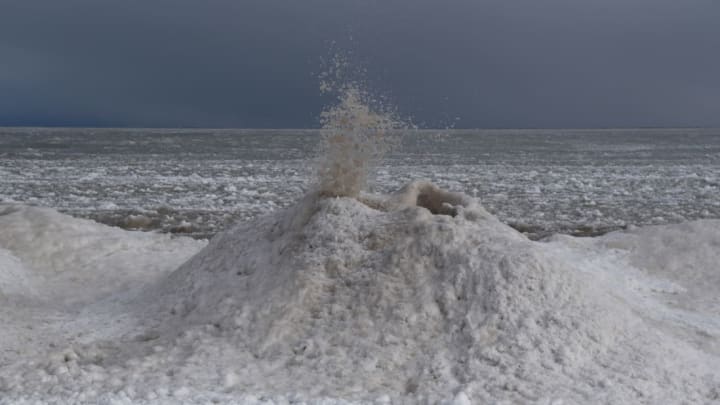Thanks to some extremely persistent cold temperatures, residents of areas as far away as Kazakhstan as well as domestic sites like the Great Lakes have been treated to an unusual weather phenomenon. They’re called ice volcanoes, or ice canos, and they’re nature’s mostly harmless re-imagining of a volcano.
You can see this atypical formation in Kazakhstan, which reportedly crops up every January and looks like a place for Frodo to drop a ring into, in the video below.
An ice cano needs some very specific conditions in order to appear. Tom Finley, director of education at Schlitz Audubon Nature Center in Milwaukee, Wisconsin, told The Washington Post that freezing temperatures (32 degrees Fahrenheit) need to be persistent. That chill coupled with strong winds will cause ice to form. The water continuing to move underneath will eventually break through the ice—known as an ice shelf—and then freeze. As more water exits, the ice volcano grows.
The formations, which can grow larger than a person, look “like a completely foreign landscape,” Finley said, with observers feeling “like you have been transported to another planet.” The ice canos dotting Lake Michigan are numerous but not terribly large; the ice cano in Kazakhstan exceeds 45 feet in height. The emerging water from the top looks like a geyser, giving it all a school science fair feel.
Because ice volcanoes rest on unstable ice shelves, it’s not a good idea to examine one up close. Finley recommends going in a group, using walking poles and cleats, and being aware of frostbite.
[h/t Travel Awaits]
